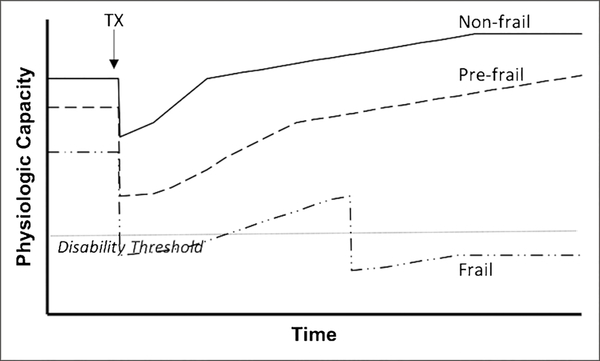Figure 1.
A schematic of frailty as the loss of functional reserve. A non-frail patient (solid line) receives a kidney transplant (arrow): physiologic capacity decreases post-operatively and recovers to a better baseline than pretransplant. A prefrail patient (hashed line) experiences a greater decline and slower recovery of physiologic capacity, but ultimately achieves better physiologic capacity than pretransplant. A frail patient (dotted and hashed line) experiences a great decline in physiologic capacity to the point of losing dependence (horizontal dotted line), at which point recovery is prolonged and also plagued by further setbacks, which eventually results in a permanent loss of functional independence and poor outcome.

